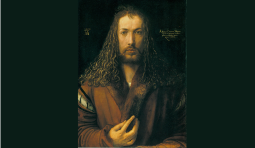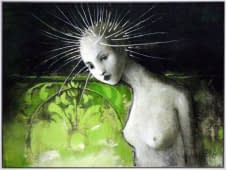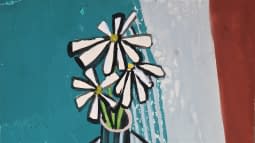The ram – a symbol of power (of creation) and resilience (Part 2)
Part 2: The meaning of the animal for humans
In contrast to today, the evidence of human artworks described in the first part suggests a polycentric view of the world. Thus, even the animal motifs predominate in comparison to the depictions of humans (cf. Roters 2022, 28). This shows that humans identified and felt connected to animals, because they «lived with animals, reflected themselves in them, designed symbol systems, let their imagination be stimulated by them and depicted them in their art» (Roters 2022, 28). Similarly, the techniques, styles and narratives used to depict animals vary, demonstrating the diversity of artistic practice and the corresponding socio-historical conditions. Animals appear early in the form of wall paintings as well as small, simplified but fully sculptural figures. These animal figures have a magical power due to their volume and simplicity, which makes them appear as something inadequate and mystical for humans. What is impressive is the early human language of form, which manifests itself in an effort and skill. Prehistoric humans had an astonishing sense for the plastic and for reduction at the same time.
The prehistoric figures and representations can be interpreted as a link between animals and humans, but also as a sign of respect, reconciliation and remembrance, especially considering that they occasionally served basic human needs such as hunger and warmth and were killed for it (cf. Stegmann 1998, 8). The actual reasons for the graffiti in caves such as Lavaux remain a mystery and are open to many interpretations. Did they serve to depict the evocation of a successful hunt? For communication? Were they part of shamanic rituals? Or did they even serve to identify our ancestors? One assumption is that they were meant to represent or invoke a successful hunt, but also to communicate hunting information between other people. It is also possible that the images were meant to «produce» animals, as they suddenly disappeared from these regions due to global warming and changing conditions. But they could also have been part of a shamanic ritual through which contact could be made with the spirit of the animals, or they could help trigger a spiritual vision. The geometric signs and patterns in the caves probably stand for hallucinogenic states of consciousness, while the animal paintings, which use the natural contours of the cave, point to a ritual materialisation of the animal spirits already present in the underground (cf. Kalof 2007, 2–3). A social relationship was thus to be established through these images. Shamanistic cultures, as presumed for the cave paintings, are usually zoomorphic. People saw and experienced the world in animal forms and with animal attributes, which is why it is argued that the cave paintings are much more likely to represent spirit animals than copies of real animals. The altered state of consciousness attained was thus not only visual but also somatic in nature and was perceived as a new «reality». The purpose of these shamanic rituals was to make contact with supernatural forces, it was an attempt to gain control over the animals, health and weather, the ritual thus enabled a potential for action (cf. Kalof 2007, 3). The presumably zoomorphic paintings could thus be an expression of an altered state of consciousness in which people felt as if they were becoming an animal. The paintings were intended to represent the significance of these animals, together with their ascribed characteristics. For the environment was perceived as populated by creatures that, like humans, had a consciousness, a history, a personality and a spiritual power, the transitions were fluid and the worlds were interchangeable, absorbing each other's properties. Animals were therefore not only sources of food or of danger and insecurity. They were also objects of interest and of human social life, and thus sources of imagery and metaphors. This preoccupation with animals went beyond a mere utilitarian necessity. Animals provided a form of identification; hunters and gatherers could thus ask themselves «who are we...? ». (cf. Dowson, Porr 2001). The relationship to the animals could thus be reflected, which was seemingly based on «trust, equality, respect and independence» (Dowson, Porr 2001, 173). Thus, humans also adopted their animal characteristics and negotiated the social roles of the environment. These intimate, shamanistic rites of passage into the world of the animals were perceived as real, which can be seen in the geometric patterns, the structures of the painting ground and the three-dimensional objects. The power of these animals thereby passed over into the human being. (cf. Dowson, Porr 2001). Even if the prehistoric pictures open up countless questions that cannot be conclusively clarified, one thing can be stated in any case: Animals have always been admired and have always been part of human rituals and ceremonies.
From decoration to sacrificial animal – the versatile use of animals
This close connection and engagement with the animal has been continued, developed, discussed and established in art for thousands of years. Fauna has always been interpreted and depicted in a wide variety of forms and cultural contexts, usually showing a form of appreciation for food, but also a search for common ground, whether between humans, animals or gods. In addition to wall paintings and clay figures, animals later also adorned antique utilitarian objects such as coins or vases and appeared in the Middle Ages as heraldic animals. In the historical history of the visual arts, they usually convey a symbolic or allegorical meaning and accordingly also shaped the iconography. They were given various characteristics and attributes, but were also attributed to figures, persons, heroes, rulers or saints (cf. Roters 2022, 30). Animals, however, were also used as mere decorative elements or, from the modern era onwards, satisfied the human urge for exact representation in naturalistic depictions. But even in this, a lasting admiration for the «divine creation» was always expressed. Later on, animal painting developed into a genre of its own, starting with Dutch painting in the 17th century. Animals also appear in paintings as foodstuffs or appear in hunting and kitchen still lifes as dead animals, which illustrate the contrast between life and sudden death. This is an exciting parallel to the sacrificial death of animals, which is already found in many older cultures and apparently continued. This was to provide for the gods. Especially in the Mediterranean region (Sardinia and Crete) of the Bronze Age, bronze or clay ram figures were probably used as «substitute sacrifices in the fertility cult» (Maringer 1980, 136). In sacrificial death, joint killing was at the centre of the action, an act of violence in which hunting can be seen as its origin. This shared experience of killing and subsequent eating strengthened the community and formed a bridge of encounter between humans and deities, but also demonstrated power over the animal. Thus, man increasingly went from being ruled by the animal to being ruled over the animal. Blood was always considered a symbol of life, as it was subsequently in Christianity, when Jesus sacrificed his blood for humanity.
The Ram in Antiquity and Christianity
In Greek mythology, the ram is a popular sacrificial animal. The flying and talking ram Chrysomeles, which is sacrificed, is particularly well known. After Nephele asked the gods to bring her children Helle and Phrixos to safety from the new wife of the Boeotian king Athamas, they sent her the golden ram. The ram flew with them to Colchis and brought only Phrixos safely there. The ram was then sacrificed in the temple of Zeus by his own order, thus giving thanks to the gods. The golden fleece went to Aietes, king of Colchis. He hung the «Golden Fleece» on a tree in the grove of the god Ares and had it guarded by a dragon. As a sign of the zodiac, Chrysomeles the ram then became a constellation in gratitude. Precious metals such as gold have fascinated people since time immemorial and often symbolise the sun and light, which are highly valued in human cultures. For the power of their shining is of great importance for human life. In Colchis, where the Chrysomeles legend is set, people used to use sheepskins to wash gold dust from the rivers there. This turned the animal's fur into a precious gold fleece and probably inspired the myth of the Golden Fleece. In mythology, this was later stolen by force by the Argonaut Iason, because gold was and is also an object of desire due to the aforementioned connection to the powerful and strength-giving sun. Thus, the Golden Fleece was also regarded as a great treasure throughout the world and makes the ram take on a sacrificial role in this story.
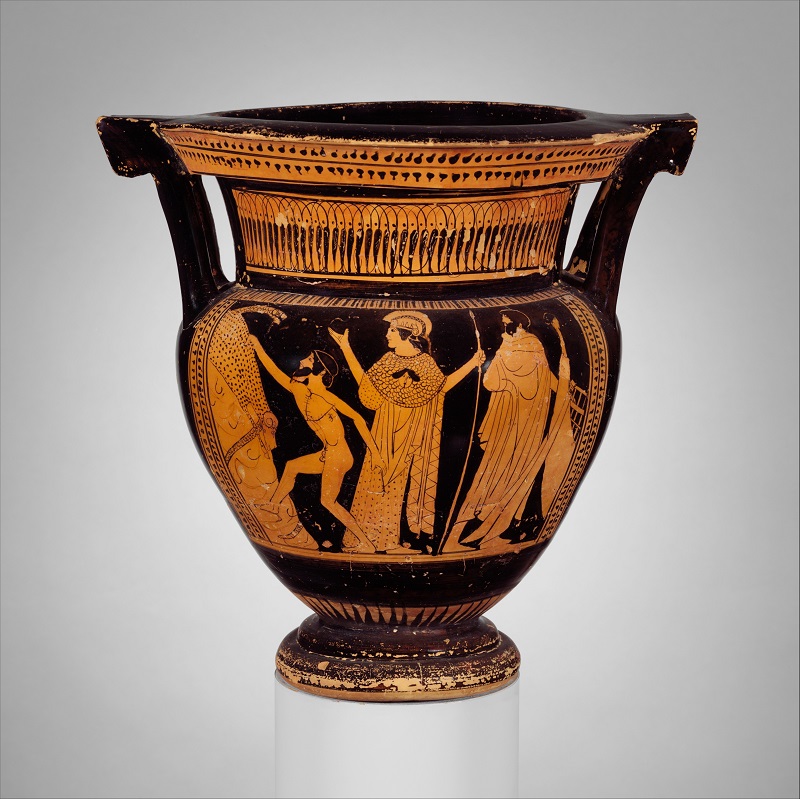
Also popular as a representation was the story of Odysseus, who saves himself from the blind Cyclops Polyphemus at the belly of a ram. The ram was also sacrificed to Zeus afterwards.
In the European and Christian Middle Ages and in modern times, animals were above all «symbolic carriers of religious or power-political messages» (Roters 2022, 34). They conveyed religious virtues. In so-called bestiaries, actual or ascribed characteristics of animals instructed and moralised humans. In Romanesque architecture, they also symbolised the devilish and took on an apotropaic function on capitals. The sheep also played an important role in Christianity. It is a reference to the birthplace of Jesus in the stable. As Agnus Dei (Lamb of God) it refers to the redemption of mankind through the sacrificial death of Jesus (cf. Roters 2022, 34). The lamb as a sacrificial animal thus continues in Christianity. The sacrifice of Isaac in the Old Testament was already depicted in early Christian funerary art (catacomb painting and sarcophagus painting) but remains popular in the early modern period and in the Baroque because of its high drama. God required Abraham to sacrifice his son Isaac, but before he could cut his son's throat on the Temple Mount in Jerusalem, an angel appeared to him who spoke for God and stopped Abraham before he could kill his son. Thus, he proved his devoutness to God. Instead of his son, Abraham sacrificed a ram. The ram's horns were caught in a hedge (cf. Poeschel 2014, 49).
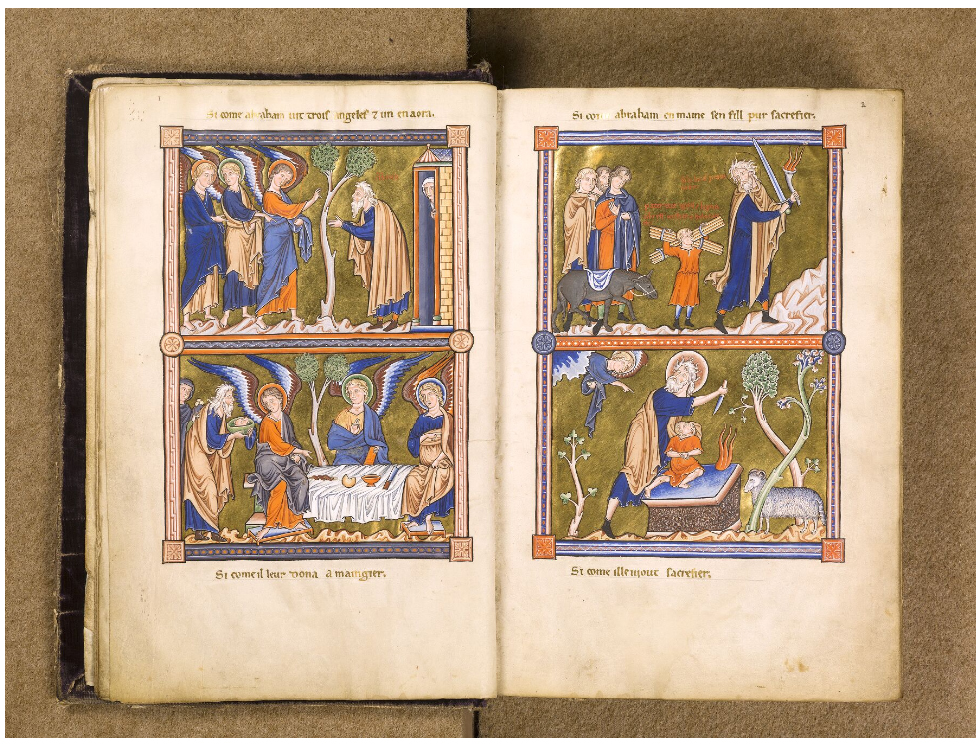
The ram is thus the sign of a sacrifice and corresponds as a prefiguration with Christ. The hedge that catches the ram also refers to the tree of life from which the cross of Christ was made; the prefiguration of Christ's coming sacrificial death for humanity is clear. The animal, like Christ, thus redeems man from sin and death, which as powers dominate human life. For faith in Jesus helps believing people to an eternal life; man is thereby freed from his fear of death, death loses its power and helps to a «new life». The ram as a symbolic animal therefore has a dramatic connotation. Combined with the interpretation of the lamb/sheep, the strong and resilient male sheep also acquires the symbolism of gentleness, innocence and purity, qualities which are reflected by the white colour of the coat. This purity ascribed by man makes the sheep a suitable sacrificial animal in Christianity. In this context, the shepherd leading the sheep is a repeated motif in the Bible, for example Abel or King David were shepherds. Jesus is also understood as a shepherd who leads humanity and who is in turn led by God. The biblical people experienced sheep as good-natured, which is why they also served as a symbol of patience, as well as a person with good intentions, but who is dependent on help and guidance. Thus, it is also reported of Jesus that he had compassion on the many people who seek his nearness, «[…] because they were harassed and helpless, like sheep without a shepherd » (Matthew 9:36). Jesus the shepherd goes to the extreme and sacrifices himself on the cross for his sheep, or humanity, and was accordingly called the «Lamb of God» by John. In this Christian interpretation, it becomes clear that man seeks animals as a guide for his own life. Animal characteristics are observed and used for human stories and needs. The relationship and parallels between humans and animals are thus based on the search for meaning.
The ram was thus depicted as a sacrificial animal in the art of antiquity and the Middle Ages. Do you want to know what the sacrifice of the ram is all about and how it is connected to the art24 charity event? Find out more in the third part!
Glossary part 2:
Polycentric: From the Greek «polýs» for «much» and «kentron» for «centre», meaning in the context that the world had several centres and that not only man was at the centre of the world view.
Zoomorph: Composed of the Greek terms for «animal» and «form». These are figures that have human as well as animal characteristics and vice versa.
Somatic: From the Greek «soma» for «body». The term thus refers to the body and in the shamanistic context represents bodily experiences and sensations. So, in somatic hallucination, it becomes part of the real world and bodily experience.
Bestiary: From Latin «bestia» and means as much as «[wild] animal». The bestiary contains medieval animal poetry that has a moralising and instructive function. In the process, (assumed) characteristics of animals were associated with the Christian doctrine of salvation. Besides animals, mythical creatures are also included in bestiaries.
Prefiguration: A foreshadowing representation, allusion, in relation to the Bible, this is also called «typology». In this process, persons/events from the Old Testament are placed in relation to persons/events in the New Testament. This legitimises the content of the New Testament as it is fulfilled.
picture credit:
Image 3_Terracotta column crater (bowl for mixing wine and water), attributed to the Orchard Painter, c. 470-460 BC, Classical Period, Greco-Attic, The Metropolitan Museum of Art, New York, Harris Brisbane Dick Fund.
Image 4_Fol. 10v-11r, Ingeborg Psalter (French: Le Psautier d'Ingeburge), Ms. 9 Olim 1659, c. 1200, 10v-Abraham and the three men/angels, with Sarah in the background respectively, 11r Abraham and Isaac on the way to the sacrifice (above) and the binding of Isaac with the ram (below). Musée Condé, Chantilly, photo: Bibliothèque du château de Chantilly.
Cover_The Met Museum. Limestone ram-baerer, second quarter of 6th century B.C.

